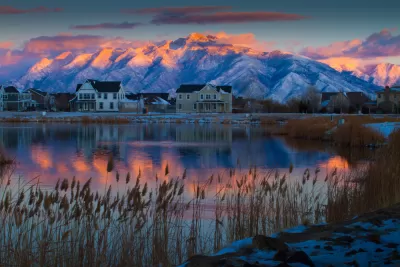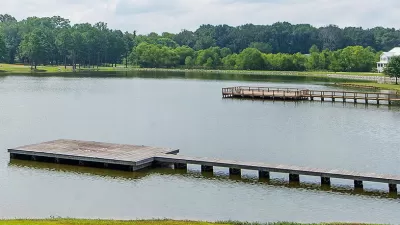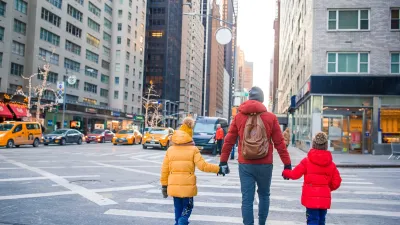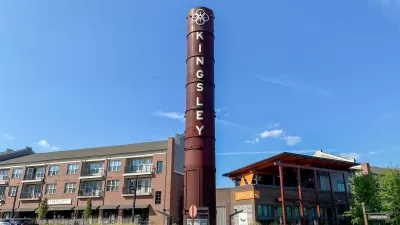Suburban dwellers are increasingly calling for more mixed-use development, walkability, and access to transit.

An article by Patrick T. Brown in Deseret News highlights the Utah community of Daybreak, which Brown argues can serve as a model for the more walkable, sustainable suburbs of the future.
“In July 2020, three-quarters of Americans told pollsters that being within walking distance of destinations like shops and parks were important to them, yet too many new developments still assume a car-dependent lifestyle.” Consequently, developers are starting to build denser, mixed-use suburbs in an effort to provide both more spacious living quarters and access to amenities.
“In contrast to restrictive zoning and land use restrictions that hinder development in many suburbs, Daybreak’s agreement with the city of South Jordan allows the developers to build housing at any density the market can support, with the potential of reaching 20,000 housing units over 4,200 acres.” Daybreak aims to offer housing at different price points and connects to the regional light rail system.
Brown argues that “The success of the Daybreak concept — using denser, traditional styles of development with amenities that attract families and keep housing costs affordable — should be one that spurs similar approaches throughout the country.” Like Paris Mayor Anne Hidalgo’s campaign to make Paris a 15-minute city, American mayors should, in Brown’s view, take an intentional approach to cultivate dense, walkable, developments that buck traditional suburban norms. As Brown writes, “Booming metro areas will appeal to families when homebuilders are allowed to create developments where community life can organically occur.”
FULL STORY: Perspective: Is the future of the suburbs in Utah’s Daybreak?

Alabama: Trump Terminates Settlements for Black Communities Harmed By Raw Sewage
Trump deemed the landmark civil rights agreement “illegal DEI and environmental justice policy.”

Study: Maui’s Plan to Convert Vacation Rentals to Long-Term Housing Could Cause Nearly $1 Billion Economic Loss
The plan would reduce visitor accommodation by 25% resulting in 1,900 jobs lost.

Planetizen Federal Action Tracker
A weekly monitor of how Trump’s orders and actions are impacting planners and planning in America.

Waymo Gets Permission to Map SF’s Market Street
If allowed to operate on the traffic-restricted street, Waymo’s autonomous taxis would have a leg up over ride-hailing competitors — and counter the city’s efforts to grow bike and pedestrian on the thoroughfare.

Parklet Symposium Highlights the Success of Shared Spaces
Parklets got a boost during the Covid-19 pandemic, when the concept was translated to outdoor dining programs that offered restaurants a lifeline during the shutdown.

Federal Homelessness Agency Places Entire Staff on Leave
The U.S. Interagency Council on Homelessness is the only federal agency dedicated to preventing and ending homelessness.
Urban Design for Planners 1: Software Tools
This six-course series explores essential urban design concepts using open source software and equips planners with the tools they need to participate fully in the urban design process.
Planning for Universal Design
Learn the tools for implementing Universal Design in planning regulations.
Caltrans
Smith Gee Studio
Institute for Housing and Urban Development Studies (IHS)
City of Grandview
Harvard GSD Executive Education
Toledo-Lucas County Plan Commissions
Salt Lake City
NYU Wagner Graduate School of Public Service





























